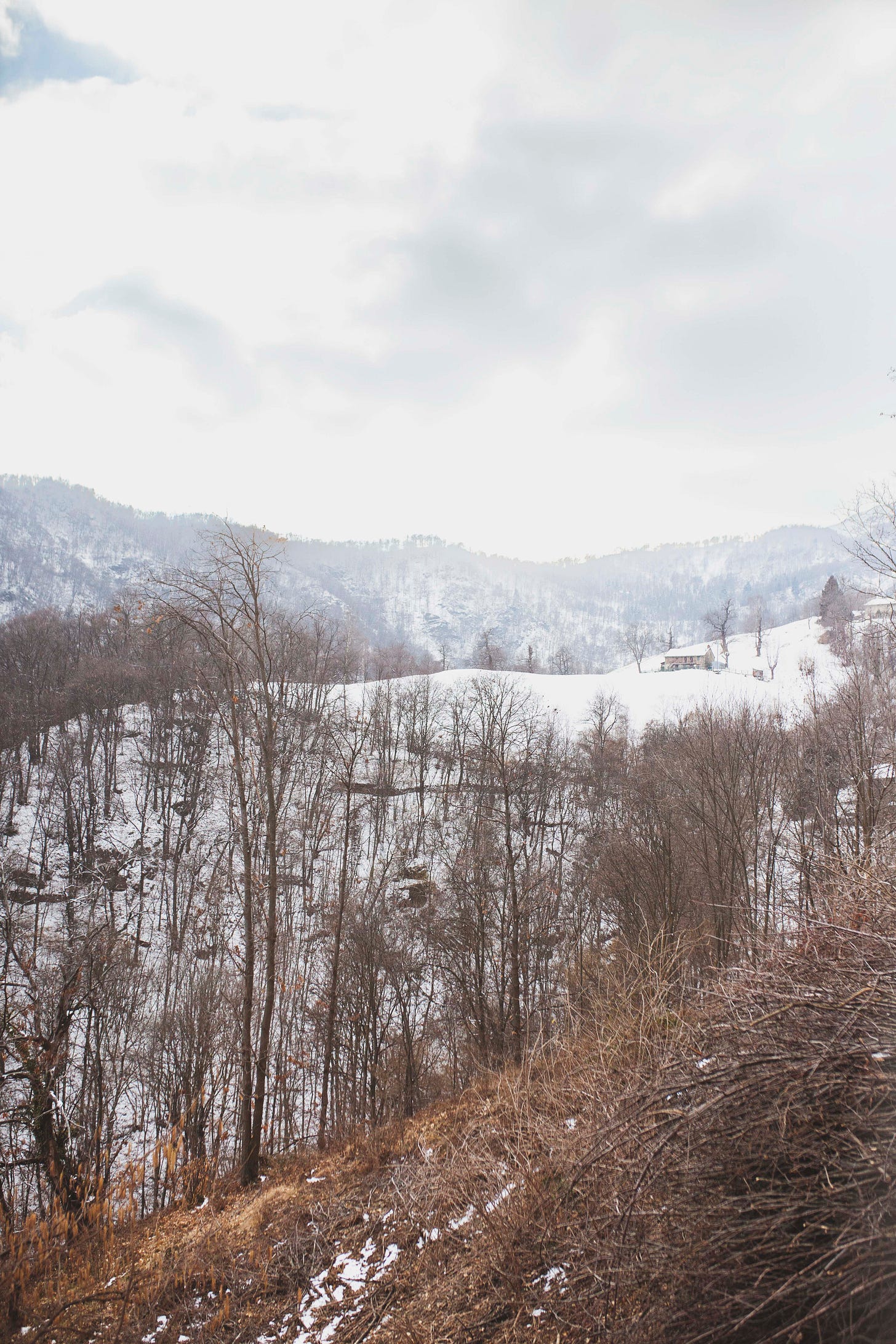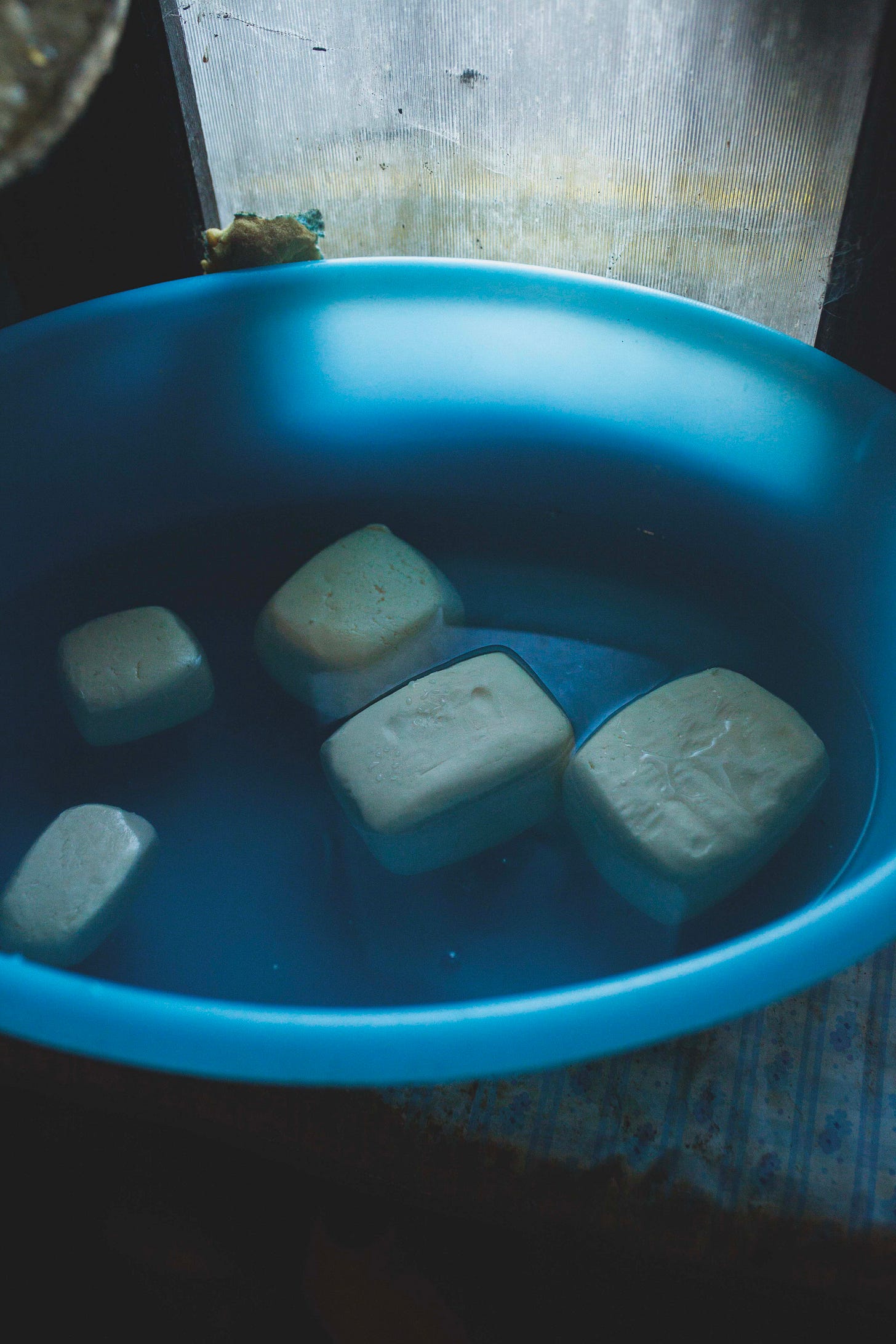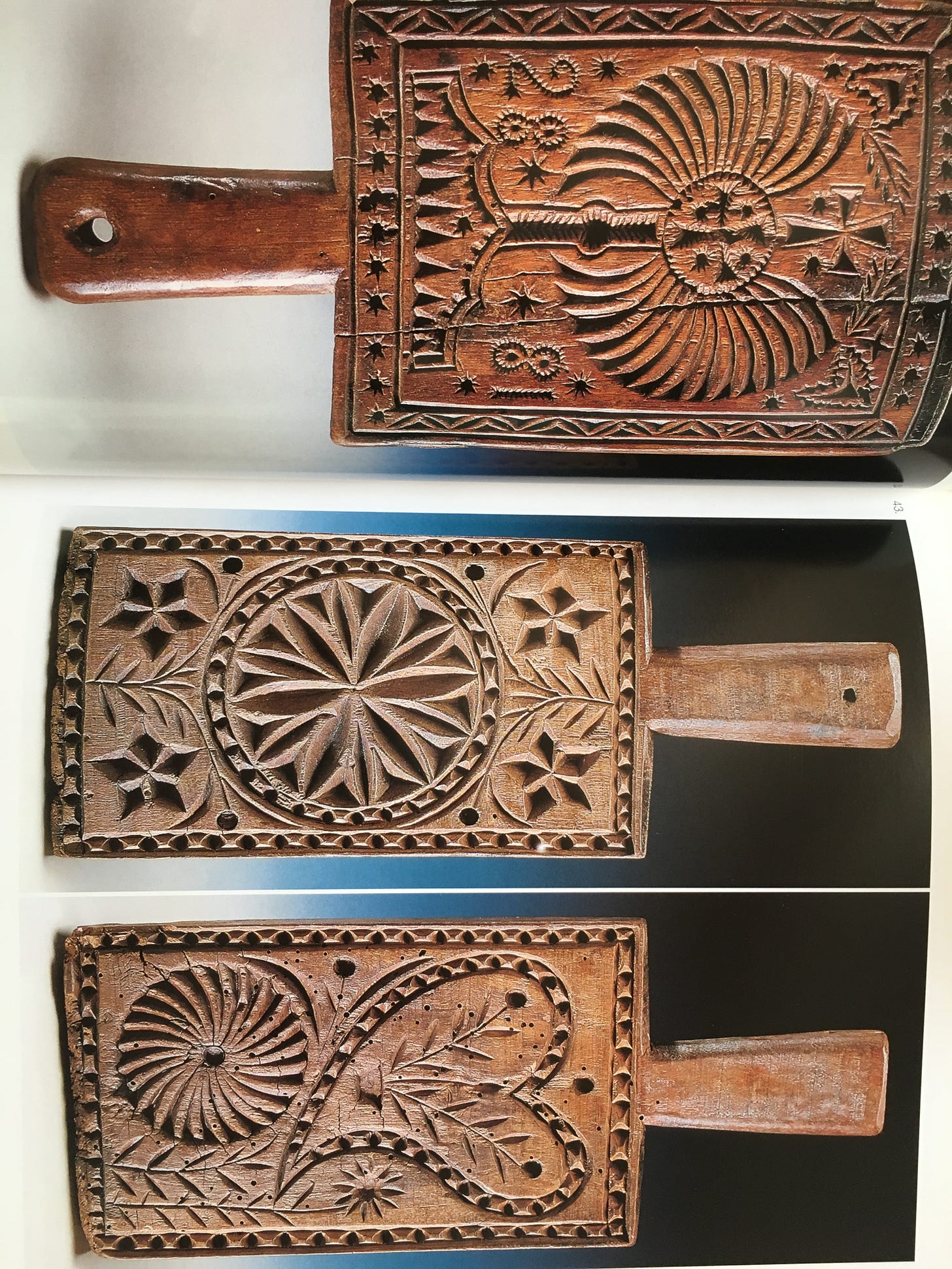part two - EATING CAT, RABBIT, HORSE AND ILLEGAL BUTTER // In Defence Of The Mountain
A three-part reflection on the discovery of taboo traditions that are steeped in the complex and harmonious routines of pre-alpine survival culture.
I’m so pleased to share with you this second section of my recent trip to the mountains. By visiting these places I come across realities that leave a deep groove in my outlook on food, which makes me think how the majority of us have adapted to systems that don’t necessarily make sense, especially when placed against these pre-established secrets that are older and wiser. The are changing the way I am.
Please read PART ONE if you haven’t already.
I strongly advise making a cup of tea and having a good sit before reading.
Names of the alpigiani are respectfully omitted, I hope one day this will change.
Paid subscribers see my additional photography and tasting notes / description of the illegal butter.
IN DEFENCE OF THE MOUNTAIN // part two
Max Jones
On my last day in the Biellese, I went up into the mountains again to look for that winter’s supply of smoked chestnuts to take back home with me to Ireland. There is so much in this particular food, when I am away it connects me immediately to the landscape they are from. This involves a drive along very tight track through dense forest along the tiny river, all hairpin turns over stone bridges, and then a hike through the roadless smattering of mostly abandoned stone dwellings crammed high against the steep mountains of the Elvo valley.
Seeing no smoke from the chimney that poked out of the stone-slabbed roof of the first dwelling I knew, I walked the tricky route twisting up round the sparse chestnut trees, noticing life by the sight, sound and smell of a of a bonfire. Seeing that the second dwelling’s chimney was not smoking either, I asked the lone man who was burning a pile of raked chestnut leaves if he had seen my friend D. It turned out to be one of his brothers and he pointed to their home, another dwelling further up the mountain.
D's place was a kind of mini farm on two storeys, crammed onto a small shelf of levelled out rock at ninety degrees to the slope of the mountain. A lean-to with some old farming equipment, chains and ropes spread around and some loose bales of hay on which herding dogs stood barking, one of them had eyes exactly the same colour as the frozen stream I had passed just below, all made me feel as though I was walking into the fifties or before, with no anachronisms to remind me of when I actually was.
A crude scythe leant up against the dark doorway whose blade was made from an extremely light sheet of very sharp steel. I opened a solid wooden door into a dark space that was cluttered with tools and paint-pots, cobwebs, worn overalls and coats hanging on coat hooks spattered with woodworm holes. Old things that are used and repaired and used again on a daily basis as part of that life. I saw D hunched over a wooden barrel, cleaning it with hot water from a pot hanging over a fire. To my right, the light from the small window lit up the rising steam from a freshly cleaned wooden casùl that hung above a blue plastic tub filled with mountain water in which bobbed five misshapen blocks of butter.
Each piece had been worked by hand with the wooden casùl, used to skim cream and then knead butter, pale from the sun-bleached hay cut during the summer. It’s strange, but when I looked at the blocks, trying to be square but with every side a little wonky, with rounded corners showing a softness of touch, proven by Rocco’s dimpled thumb-prints that held droplets of water, it’s hard to express the deep connection and protective fondness I felt to what I was seeing, and where I found myself. Completely detached from the life of the city below. I was mindful of an overwhelming and visceral sensation of freedom that flooded through me. Real shivers. The ones that make you want to pull your head back into your arched shoulders.
I imagine what the world would be like if everyone made food this way.
“D, this is unreal. I would love some of your butter. Could you sell me some to take home?”
“No no no I can’t, it’s just for us- and besides, it doesn’t even have its stamp yet”
I remembered that traditionally butter would have been signed with a wooden stamp, a kind of maker’s mark in the shape of a cow or a star or a heart that was usually carved by the person who made the butter, telling the consumer where it was from. I sat on an old splintering stool and warmed my boots by the sooty fireplace, waiting for D to finish up. In this time I realised he had told me that it wasn’t “finished” with his stamp as a kind get-out-clause as to why he couldn’t sell me the butter, and not offend me either.
I looked around the tiny space and saw thick plastic milk churns upturned to dry, a steel vat for milk, buckets of whey and buttermilk on the floor giving the inimitable and familiar lactic smell of naturally soured milk that mingled wonderfully with woodsmoke. There were more cheese and butter making tools made of wood, copper and aluminium hanging from the walls, with brass weighing scales hung by a whisk next to a calendar of tractors from 1994.
I was so enthused by D home, brimming with confidence and joy and gratitude in this space that was so in touch with itself, pulling its past steadily into the future- everything about what I had just stumbled into is why Up There The Last was founded.
There is a romantic simplicity with which we want to read about these people who lead “simpler lives” and who live off the land. And he is just that, of the kind of timeless mountain person who I would realise are as much part of the mountain as the rocks or the herd, transforming the tough landscape into food. And we are in danger of compartmentalising them reductively, I think. It is important to explain here that D is as complex and interesting as anyone I know.
His life is different, and demanding because of it.
As he finished up his work, I asked if I could take some photos and his reaction was startling. With honest eyes he turned to me and brought his wrists together in front of him saying, “no you can’t, I don’t want to go to prison”.
He took a couple of glowing twigs from the fire beneath the pot and I followed his smoking trail into the next room, where he stooped to light one of two enamel stoves from the 1950s. I ducked past three salami that hung from the low ceiling and sat at the small table taking this chance to scan the room- an unfinished floor, a huge flue from one of the stoves stretching at a diagonal through the entire room to maximise on heat, an old press at the back covered with half finished demijohns, pots, pans, ladles, old tobacco packets and jars. He took one of seven old stove-top espresso makers and filled it with coffee from a glass jar and water from the mountain spring that trickled from his tap.
We shared cigarettes, coffee and grappa around his tiny blue table, with a waxed gingham tablecloth, formica chairs and sofa-bed from the 1940s crammed into the corner, talking about the differences in our lives. How things go in Ireland and London and Wales and Italy, up here, down there, how he would love to visit but doesn’t have a passport and can’t readily become unwoven from his mountain ways, and I learn of the realities of an ancient lifestyle I have been studying by which we, outside of it, are so beguiled.
The man looks like he is made of stone. How his back is wrecked from work, how he can’t cut grass with the mower so uses his scythe for the hard gradient of his mountain. How he rakes fallen chestnut leaves into a vast basket back-pack as big as himself. “Awesome” I hear you say. And it is. And we should also acknowledge how difficult it is to exist like this. He is dependent on his own abilities to work with what the mountain provides for food, and manages every second of his time up there to exist in this symbiosis, for which he also makes many sacrifices. It is a life that seventy percent of alpigiani like him left for the safety of jobs in the city below in the 1950s, which saw mass depopulation of the mountains. How he hasn’t yet found a woman and how he lives in a state of constant apprehension as little of what he does conforms to health and safety regulations, and he fears potential visits. How essentially everything about these long established ways is wrong according to sets of rules that were made very recently. And here’s the paradox.
To earn money he has a part-time job down at the bottom of the valley, perhaps a twenty five minute drive from his mountain. Now, this is in one of the smaller, local cooperative creameries that uses the selling point of “most of our milk is from these mountains”, with a rhetoric of tradition and the single valley as their USP. And I’ve always liked this creamery, that trumpets local and tastes lovely, sweet and clean. But the butter is not worked by hand, they use added starter cultures, the building is made of concrete and plastic and stainless steel, and I cannot fall in love with what they produce. I like it, and always have, but it is not the real thing as I know it now, or what it wants us to think it is. Perhaps even what it itself thinks it is.
Imagining D inside wearing white wellies and a t-shirt, knowing of the true skill behind his cheese and butter at home where he would push curds into moulds in the same clothes and with hands that milked the cow or gathered chestnuts outside his home. His intuitive knowledge of fermentation used as a genuine tool for preserving food that is structured into his working day. The very fact that the dark room is never sterile is precisely why he doesn’t need to add starter cultures. His own come from the raw milk of his cows and are present in all his tools anyway, ensuring a safe make as his cheese is made with raw milk still warm from the udder to save on wood needed to reheat the milk for cheese, and never refrigerated.
The deep confusion for me here is that on the packet of the creamery butter is a picture of a stone mountain dwelling, just like the one D actually lives in. It is claiming the authentic story of the butter tradition of that valley, but it simply cannot be produced in the traditional way by adhering to food safety protocols with milk refrigeration, pasteurisation, enforced use of chemical cleaning agents and the addition of lab-made starter cultures.
The irony being of course, that it is in fact D, a highly skilled artisan, who is making the butter in this creamery. But with machines, in bulk, his expertise is wholly wasted and undervalued as he stands there in his whites- a mountain of a man in a little blue hairnet.
On top of this, it places in stark contrast the stainless steel and sterile machines of the “proper” creamery and D’s small dairy room, with its paint-pots and his herding dog poking his head in to say hello once in a while. No wonder he’s worried. Through this lens of the commercial creamery, just about every single thing D does at home is illegal and shown to be wrong. I feel he is emasculated by this, his wild ways tamed, his potential pride in making cheese and butter turned to a sort of defensive shame or embarrassment I see when talking to alpigiani like him. How their methods are somehow wrong in the face of how the world works now. But up there, amongst themselves, there is solidarity where little has changed or warped to fit the modern age.
Here’s another one. I bought an additional block of butter from the local supermarket before leaving Italy. It was from another relatively small creamery, but has a barcode on the back nonetheless. Inside the wrapper was a lightly soured butter, beautifully stamped with a heart. At home in Ireland I put them side by side, and perceived another paradox. The one with the stamp was made in a stainless steel, semi-industrial setting with pasteurised milk, made to look like the butter that was once made in the area, which it uses as its USP.
I realise that the butter we know now is a shadow of itself. Pasteurised cream with bought-in starter cultures to give it back some kind of soul like the real butter it wants us to think it is, by stamping it by the hundreds with a heart.
The lump that D had made with his hands, from his animals, from his mountain dwelling, had no stamp because it serves no purpose under his restricted conditions. The only people who eat it are the ones who make it- it cannot be sold. It is that butter that feeds D and his family, letting him live, giving them strength to make butter, and so on in this beautifully sustainable cycle. Once upon a time the stamp would have originally told the consumer who and where it was made, something that is now replaced with barcodes and the CE mark.
Two blocks of butter in front of me. One with a stamp, one without. It is a cruel irony that the one that bears the traditional stamp is the one with no real maker, and the only one of the two that is legal.
Back up at his home, we step out onto the flat farm shelf to empty his butter barrel of water and residual melted butterfat onto the land outside. I notice that during our conversation his body language changes and his back defensively squares to his mountain life behind him, his forehead lowering at a slight angle towards the valley like a rutting ram at the city lights twinkling below in the cold winter air, down there.
I tell him about how I am on his side, and frankly how I think he is one of the most important people I know. I explain how I built a space in Ireland to champion the knowledge of an artisan fish smoker who’s knowledge of real food and nature is at odds with these imposed rules, and how we should be learning from the artisans who actually live the ways of their landscape. “You are the experts”, I told him.
D gave me a wonderful block of his butter* and we stepped out into the cold blue evening down to the first dwelling further down, who’s chimney now plumed with smoke indicating another alpigiana, T, was inside and where I had sat for hours this time last year scraping clean hundreds upon hundreds of the smoked chestnuts of Bagneri.

// CONTINUED IN PART THREE //
*For detailed tasting notes and pictures of the ash inside D’s butter, as well as photography of D working in his element, please throw some money at the project! Paid subscriptions keep this thing going, so thanks!
Keep reading with a 7-day free trial
Subscribe to Up There The Last to keep reading this post and get 7 days of free access to the full post archives.






